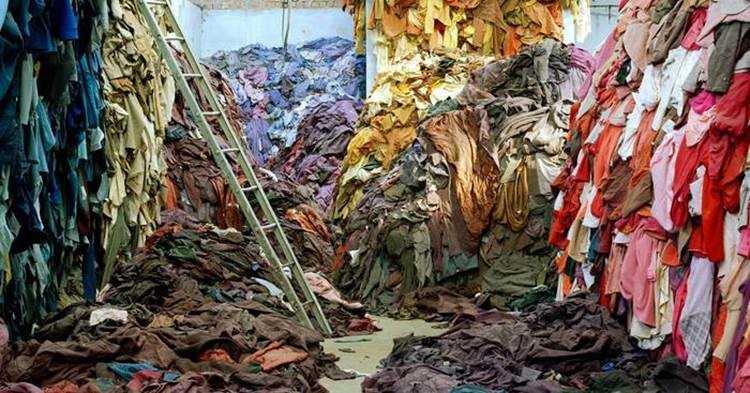 Who made your clothes? It’s a question we’re hearing more and more often as fast fashion looms ever larger over the retail landscape. So what exactly is fast fashion and how is it so harmful to the environment? And what can we do to halt its spread?
Who made your clothes? It’s a question we’re hearing more and more often as fast fashion looms ever larger over the retail landscape. So what exactly is fast fashion and how is it so harmful to the environment? And what can we do to halt its spread?
The fashion industry is one of the biggest in the world, accounting for 2% of global Gross Domestic Product (GDP). Unfortunately, it’s also now one of the biggest polluters in the world—second only to oil. The reason? Fast fashion.
The term ‘fast fashion’ refers to cheaply produced and priced garments that copy the latest catwalk styles and get pumped quickly through stores in order to maximise on current trends. It’s a relatively recent phenomenon, but its rapid expansion over a short time—fast fashion retailers grew by 9.7% between 2010 and 2015—is deeply concerning from a sustainability perspective.
Globally, we now consume about 80 billion new pieces of clothing every year—400% more than we were consuming just two decades ago. Paradoxically, the more we love buying clothes, the more we seem to love either not wearing them or disposing of them—the average UK shopper only wears 70 per cent of what’s in their wardrobe and throws out 70 kilograms of textile waste annually.
We’re no better in Australia, where we now send 85% of the textiles we buy to landfill every year. In fact, Australia is second-largest consumer of new textiles after the US, averaging 27 kilograms of new textiles per annum. We buy it, wear it once or twice, get sick of it—or realise it’s gone out of fashion—and bin it only to begin the cycle all over again.
The environmental impact of this behaviour is significant: the clothing and textile industry is depleting non-renewable resources, emitting huge quantities of greenhouses gases and using massive quantities of energy, chemicals and water. The synthetic fibres often favoured by fast fashion brands, such as polyester, nylon and acrylic, are basically a kind of plastic made from petroleum, which means they could take up to a thousand years to biodegrade.
Even the simple act of washing synthetic clothes is harmful—according to a 2011 study, a single synthetic garment can generate more than 1900 micro plastic fibres in one washing machine cycle.
Fast fashion is harmful from a social perspective, too. According to an April 2016 Oxfam report, more than 60 million people work in the garment industry to fuel fast fashion: more than 15 million of those are based in Asia and more than 80% are women, often young and from poor rural backgrounds. Asia supplies more than 90% of the garments imported into Australia.
Despite these shocking facts and figures, the outlook isn’t entirely grim. More and more fashion brands, many of them major, are obtaining ethical accreditation from Ethical Clothing Australia (ECA), and organisations such as Fashion Revolution are helping to clean up the industry. And, importantly, there are plenty of steps you can take as a conscious consumer to prevent the spread of fast fashion—because the more we avoid it, the less of a market there is for it. Here are some ideas:
· Educate yourself on environmentally friendly materials
· Use the Australian Fashion Report to check if a brand is ethical and sustainable
- Recycle or repurpose your old clothing
- Choose quality over quantity—avoid cheap garments made from synthetic fabrics
- Support ECA-accredited brands
- Encourage your favourite non-ECA-accredited brands to get accreditation
- Participate in clothes swap events, or exchange old clothing with friends and family.



